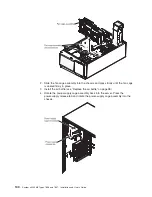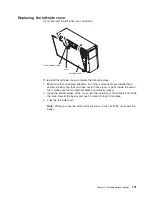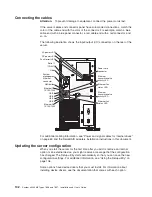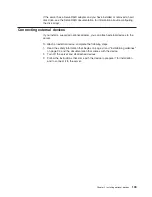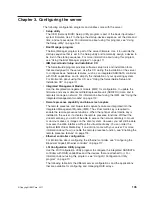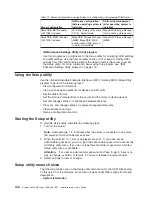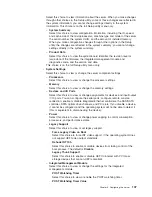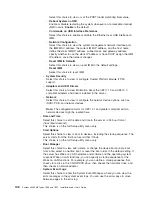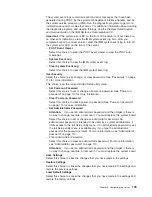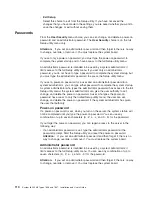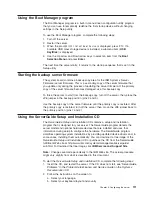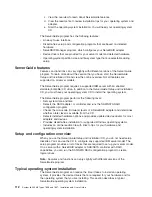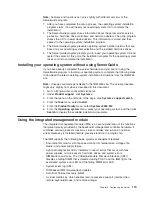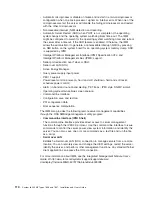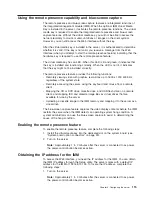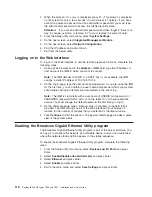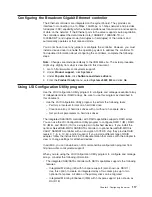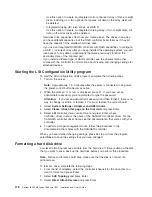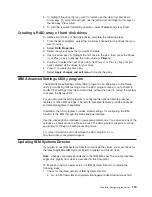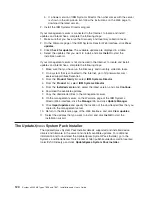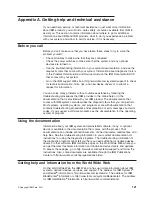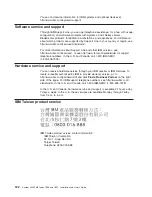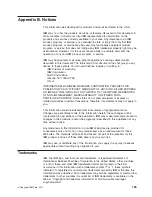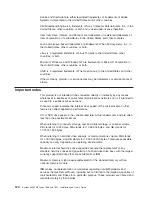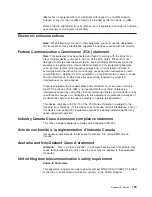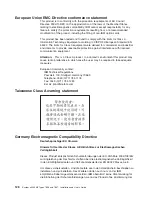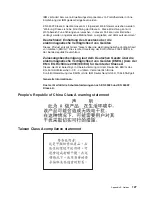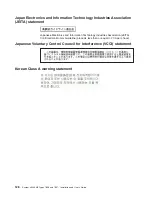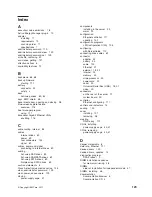
v
Automatic microprocessor disable on failure and restart in a two-microprocessor
configuration when one microprocessor signals an internal error. When one of the
microprocessors fail, the server will disable the failing microprocessor and restart
with the other microprocessor.
v
Nonmaskable interrupt (NMI) detection and reporting.
v
Automatic Server Restart (ASR) when POST is not complete or the operating
system hangs and the operating system watchdog timer times-out. The IMM
might be configured to watch for the operating system watchdog timer and reboot
the server after a timeout, if the ASR feature is enabled. Otherwise, the IMM
allows the administrator to generate a nonmaskable interrupt (NMI) by pressing
an NMI button on the system board for an operating-system memory dump. ASR
is supported by IPMI.
v
Intelligent Platform Management Interface (IPMI) Specification V2.0 and
Intelligent Platform Management Bus (IPMB) support.
v
Serial port redirection over Telnet or SSH.
v
Serial over LAN (SOL).
v
Active Energy Manager.
v
Query power-supply input power.
v
PECI 2 support.
v
Power/reset control (power-on, hard and soft shutdown, hard and soft reset,
schedule power control).
v
Alerts (in-band and out-of-band alerting, PET traps - IPMI style, SNMP, e-mail).
v
Operating-system failure blue screen capture.
v
Command-line interface.
v
Configuration save and restore.
v
PCI configuration data.
v
Boot sequence manipulation.
The IMM also provides the following remote server management capabilities
through the OSA SMBridge management utility program:
v
Command-line interface (IPMI Shell)
The command-line interface provides direct access to server management
functions through the IPMI 2.0 protocol. Use the command-line interface to issue
commands to control the server power, view system information, and identify the
server. You can also save one or more commands as a text file and run the file
as a script.
v
Serial over LAN
Establish a Serial over LAN (SOL) connection to manage servers from a remote
location. You can remotely view and change the UEFI settings, restart the server,
identify the server, and perform other management functions. Any standard Telnet
client application can access the SOL connection.
For more information about IMM, see the
Integrated Management Module User's
Guide
at http://www.ibm.com/systems/support/supportsite.wss/
docdisplay?lndocid=MIGR-5079770&brandind=5000008
114
System x3400 M2 Types 7836 and 7837: Installation and User’s Guide
Summary of Contents for 783722U
Page 1: ...System x3400 M2 Types 7836 and 7837 Installation and User s Guide...
Page 2: ......
Page 3: ...System x3400 M2 Types 7836 and 7837 Installation and User s Guide...
Page 8: ...vi System x3400 M2 Types 7836 and 7837 Installation and User s Guide...
Page 18: ...xvi System x3400 M2 Types 7836 and 7837 Installation and User s Guide...
Page 57: ...Chapter 2 Installing optional devices 39...
Page 122: ...104 System x3400 M2 Types 7836 and 7837 Installation and User s Guide...
Page 153: ......
Page 154: ...Part Number 69Y4170 Printed in USA 1P P N 69Y4170...

